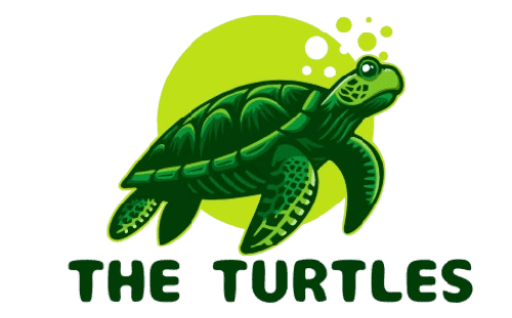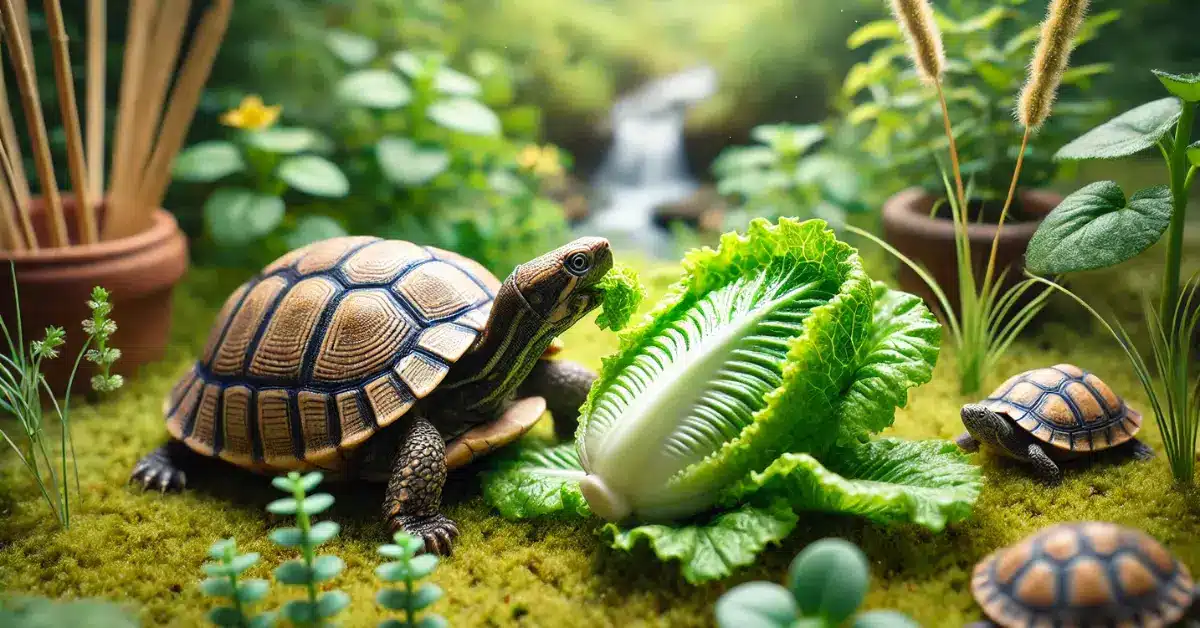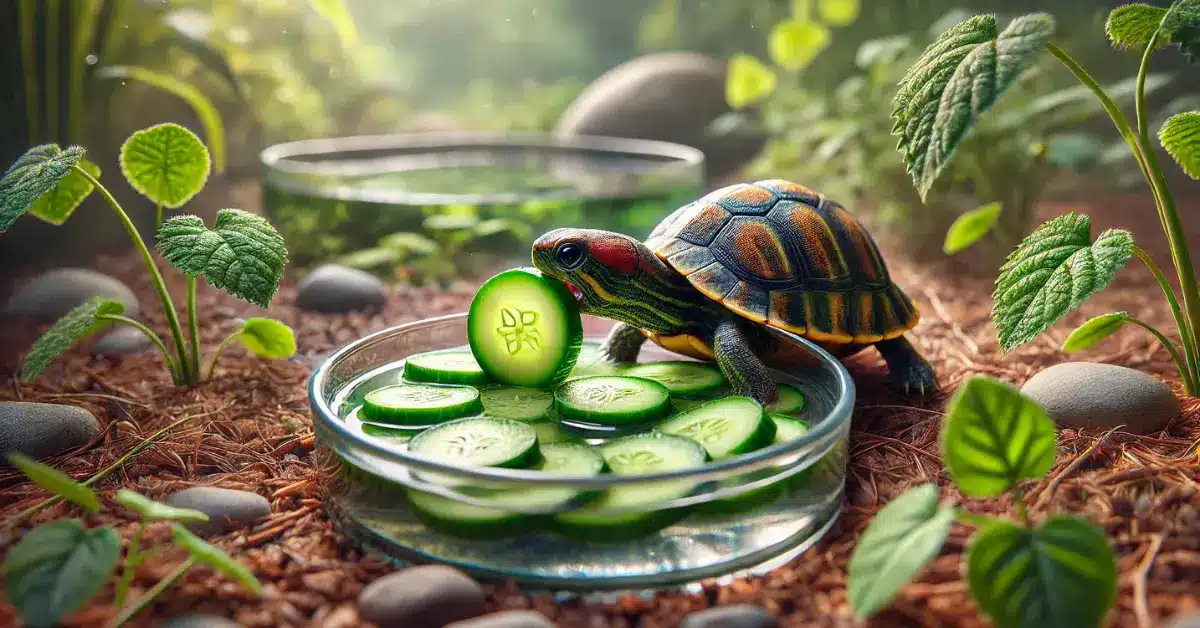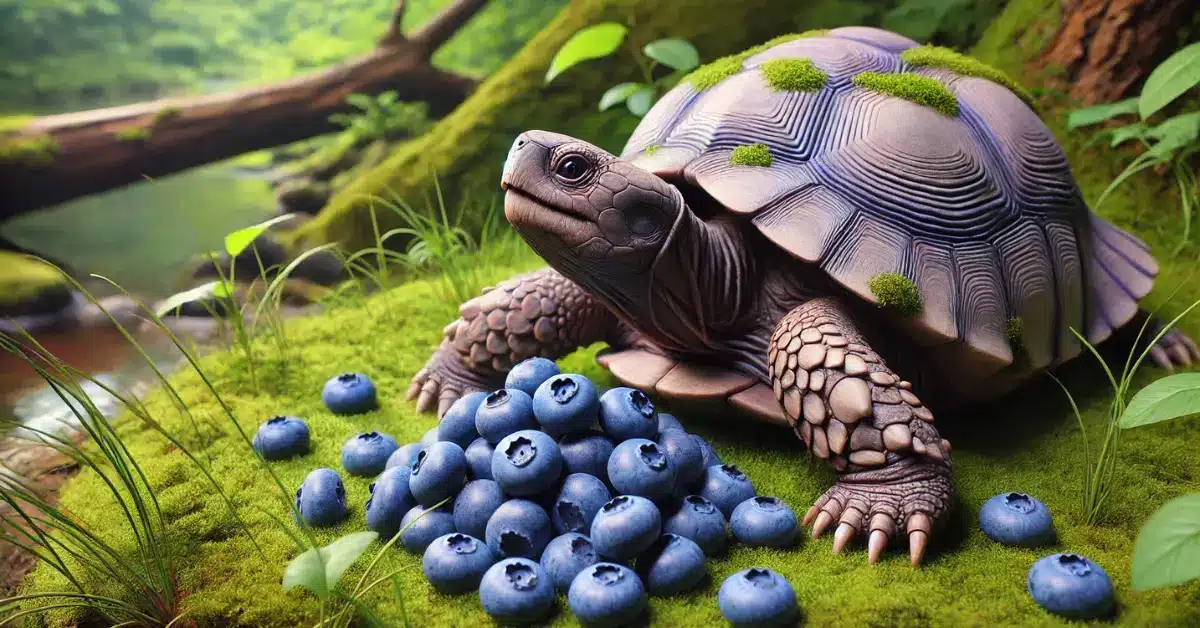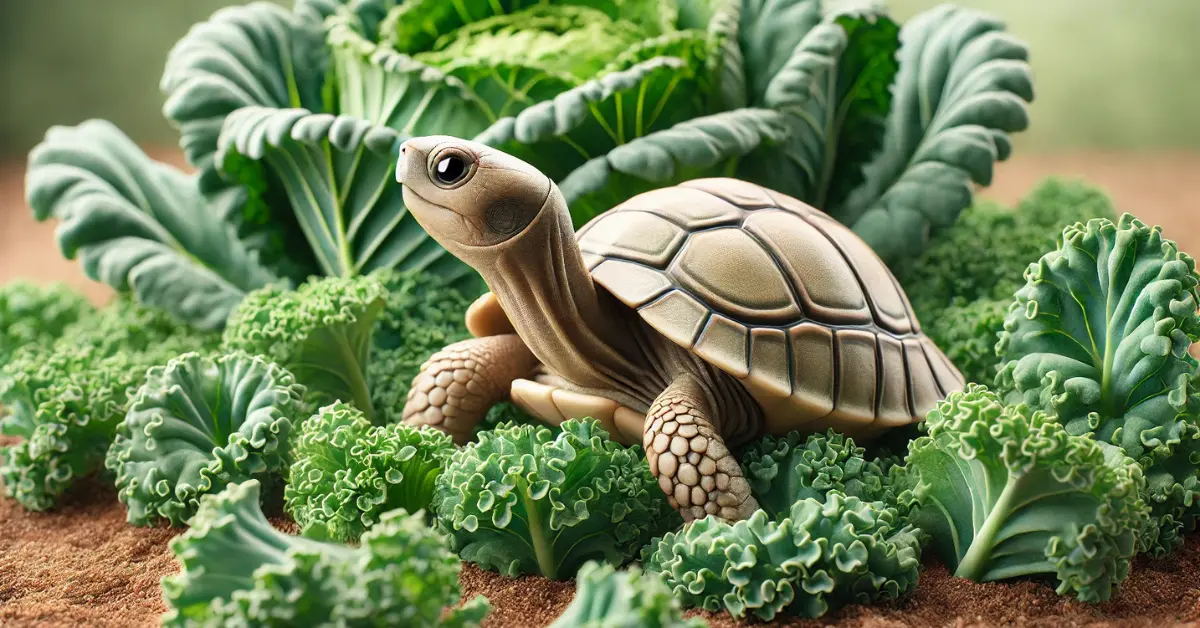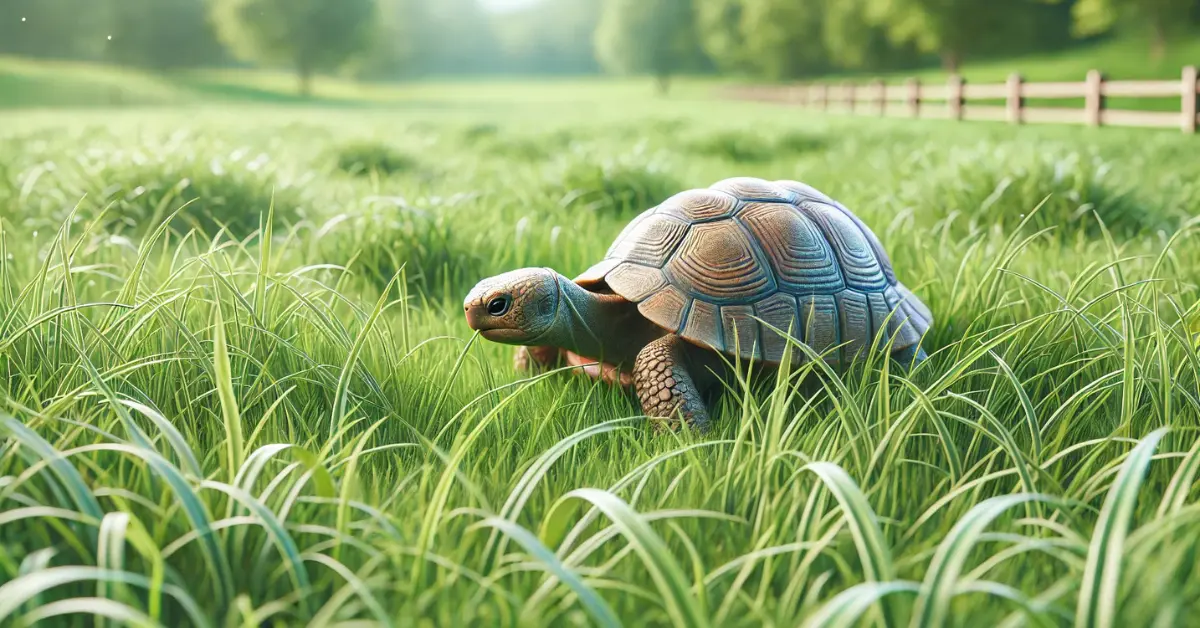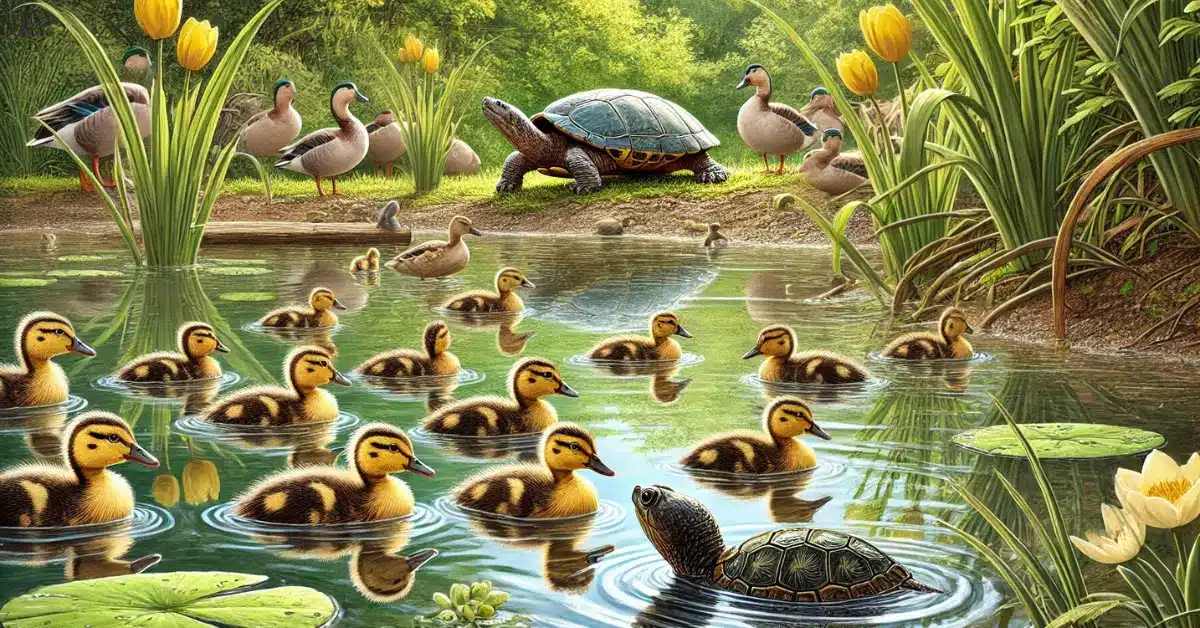Have you ever asked, “Do turtles eat dragonflies?” Yes, turtles do eat dragonflies, but they don’t eat them all the time. Turtles might enjoy a dragonfly as a tasty snack because it has good nutrients. In this blog, we will explore how dragonflies are part of a turtle’s diet, how different turtles catch them, and what to know if you want to feed dragonflies to your pet turtle. Keep reading to learn more about how dragonflies fit into a turtle’s life!
Table of Contents
ToggleWhat Is a Dragonfly?
Dragonflies are cool insects that belong to the Odonata family. They have big eyes and long, thin bodies. These insects come in bright colors and are great at flying. Dragonflies can hover in one spot and zoom around quickly. You often see them near water, like ponds or lakes, where they lay their eggs. They mainly eat small bugs like mosquitoes and flies. Dragonflies help keep pest numbers down and keep nature in balance.
Understanding Turtle Eating Habits
What Different Turtles Eat
Different turtles eat different things. Some turtles, like the ones that live mostly in water, eat plants, algae, and fruits. Others, like those that live on land, might eat leaves, fruits, and bugs. There are also turtles that eat both plants and animals, so they have a mixed diet. Turtles are good at eating what is available in their environment.
What Affects a Turtle’s Food Choices
- Where They Live: Where a turtle lives affects what it eats. For example, water turtles might eat more plants and small fish because they live in water. Land turtles might eat more fruits and bugs because they live on land. The environment decides what kind of food is available.
- Availability of Food: The amount of food around also changes what turtles eat. If there are lots of insects, like dragonflies, turtles might eat them. If there are fewer insects, turtles will find other types of food to eat.
- Changes in Seasons: Turtles’ diets can also change with the seasons. In summer, there might be more insects, so turtles may eat more of them. When the seasons change, the types of food available change too, and turtles eat what they can find.
Dragonflies as Potential Turtle Food
Nutritional Value of Dragonflies
Dragonflies are packed with good stuff for turtles. They have a lot of protein, which helps turtles grow and stay strong. Dragonflies also have healthy fats and important vitamins that help turtles stay healthy. Even though turtles don’t usually eat dragonflies all the time, they can be a tasty and nutritious treat when they do.
How Easy Is It for Turtles to Catch Dragonflies?
Catching dragonflies isn’t always easy. Dragonflies are fast and can fly quickly, making them hard for turtles to catch. Water turtles might have an easier time catching dragonflies because they can snap at them from the water. Land turtles, though, might find it harder to catch these quick insects. But if a turtle does catch a dragonfly, it gets a good snack.
Size Comparison: Turtles vs. Dragonflies
Turtles are much bigger than dragonflies. This size difference means that dragonflies can be a good snack for turtles. Because dragonflies are small, many turtles can easily eat them if they manage to catch one. Bigger turtles might find it even easier to catch and eat dragonflies, while smaller turtles might not try to catch them as much.
Nutrition Table of Dragonfly Larvae
Dragonfly larvae, also known as nymphs, provide important nutrients for turtles. Here’s a look at what these larvae offer:
| Nutrient | Amount per 100 grams | Importance for Turtles |
| Protein | 30 grams | Helps with growth, repair, and overall health. |
| Fat | 10 grams | Provides energy and supports cell function. |
| Carbohydrates | 5 grams | Gives extra energy, though not a major part of their diet. |
| Fiber | 2 grams | Aids in digestion and maintaining a healthy gut. |
| Vitamins | Varies by species | Essential for various body functions and immunity. |
| Minerals | Varies by species | Important for bone health and other bodily functions. |
Dragonfly larvae are rich in protein and fat, making them a nutritious option for turtles. They help turtles grow, stay strong, and maintain their energy levels. However, while dragonfly larvae can be a great occasional treat, they should not be the only food turtles eat. A balanced diet with various foods is best for their overall health.
Turtle Species Known to Eat Dragonflies
Aquatic Turtles
- Red-Eared Sliders
Red-eared sliders are common aquatic turtles often found in ponds and lakes. These turtles have a varied diet that includes both plants and small animals. Red-eared sliders are known to catch and eat insects, including dragonflies. Their ability to swim and snap at flying insects makes them well-suited for catching dragonflies.
- Painted Turtles
Painted turtles, like red-eared sliders, live in aquatic environments such as ponds and slow-moving rivers. They also enjoy a mixed diet of plants and small creatures. Painted turtles might eat dragonflies if they come close enough to the water. Their strong swimming skills help them catch insects that land on the water’s surface.
Semi-Aquatic Turtles
- Box Turtles
Box turtles are semi-aquatic, meaning they live both in water and on land. They spend time in wet environments like marshes but also wander onto land. Although box turtles mostly eat plants, they sometimes catch and eat insects, including dragonflies. They are less likely to catch dragonflies compared to purely aquatic turtles, but they still might enjoy one if they get the chance.
- Wood Turtles
Wood turtles are another type of semi-aquatic turtle. They live in forests near streams and ponds. Wood turtles have a varied diet that includes plants, small animals, and insects. They can catch dragonflies when these insects are near their wet habitats. Wood turtles use their sharp senses to find and grab dragonflies that come close to the water.
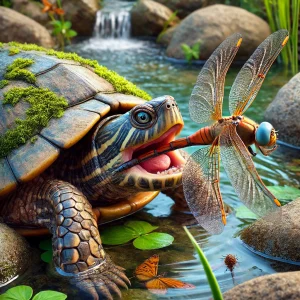
Read more: What Do Musk Turtles Eat?
How Turtles Catch Dragonflies
Hunting Techniques
Turtles use different hunting techniques to catch dragonflies. Aquatic turtles, like red-eared sliders and painted turtles, often wait patiently near the water’s surface. They keep an eye out for dragonflies flying close by. When a dragonfly lands on or near the water, turtles can quickly snap at it with their sharp beaks. On land, turtles like box turtles might use a slow and steady approach, watching for dragonflies that come close enough for a quick grab.
The Element of Surprise
The element of surprise is key for turtles catching dragonflies. Turtles often remain still and hidden, blending into their surroundings. This way, dragonflies are less likely to notice them. When a dragonfly comes near, the turtle makes a quick, sudden move to catch it. This surprise attack increases the chances of grabbing the insect before it can fly away.
Water Surface Feeding
For aquatic turtles, feeding on dragonflies at the water surface is a common method. When a dragonfly lands on the water, it creates ripples. Turtles are skilled at sensing these ripples. They use their strong swimming abilities to approach the dragonfly silently. Then, with a quick snap of their jaws, they catch the dragonfly before it can escape.
The Role of Dragonflies in Turtle Diets
Occasional Treat or Staple Food?
Dragonflies are more of an occasional treat than a staple food in a turtle’s diet. While turtles may eat dragonflies when they come across them, they don’t rely on them as a primary food source. Turtles generally have a varied diet that includes many types of food. Dragonflies provide a nutritious boost when available, but they are not a main part of a turtle’s daily meals.
Comparison with Other Insects in Turtle Diets
- Water Bugs
Water bugs are more commonly found in the diets of aquatic turtles compared to dragonflies. These bugs are often plentiful in the same habitats where turtles live, making them an easy and frequent food source. Water bugs provide a good amount of protein and other nutrients, which makes them a regular part of the diet for many aquatic turtles.
- Beetles
Beetles are another type of insect that turtles may eat. They are often found in various environments, including wet and dry areas. Beetles can be a significant part of a turtle’s diet, especially for those living on land or in semi-aquatic environments. Their hard shells and rich nutrients make them a valuable food source for turtles.
- Mosquitoes
Mosquitoes are a common food choice for many turtles, especially those living in aquatic environments. These insects are abundant near water sources where turtles reside. Mosquitoes are small and easy for turtles to catch, providing a good source of protein and other nutrients. They are often a more frequent part of the diet compared to dragonflies.
Feeding Dragonflies to Pet Turtles
Pros and Cons
Pros:
- Nutritional Benefits: Dragonflies are packed with protein and vitamins, which are good for pet turtles. They can help keep turtles healthy.
- Variety: Giving turtles dragonflies adds variety to their diet and can make feeding time more interesting for them.
Cons:
- Availability: It can be hard to find dragonflies, especially if you don’t live near where they are common.
- Safety and Cost: Buying dragonflies or catching them can be tricky. There is also a risk of them having pesticides or other harmful chemicals, so it’s important to make sure they are safe.
Read more: Can Turtles Eat Flies?
Alternatives to Wild-Caught Insects
- Commercial Insect Food: You can buy insect food specially made for pets. These include freeze-dried or canned insects, like crickets or mealworms. They are a safe and easy way to give your turtle the nutrients they need.
- Live Insect Feeders: Live insects, such as crickets and mealworms, are also available at pet stores. They are a good alternative to dragonflies and provide similar nutrition. They are easier to find and manage than wild-caught dragonflies.
- Supplementary Foods: Special turtle pellets are another option. These pellets are designed to meet all of a turtle’s nutritional needs, providing a balanced mix of proteins, vitamins, and minerals.
Conclusion
So, do turtles eat dragonflies? The answer is yes, but not all the time. Dragonflies can be a tasty and healthy treat for turtles because they have lots of protein and fat. Turtles like red-eared sliders and painted turtles might catch and eat dragonflies if they find them. But dragonflies are not the main part of their diet.
Turtles also eat other insects like water bugs, beetles, and mosquitoes. If you have a pet turtle, you can give it a variety of foods to keep it healthy. Dragonflies are just one of many options.
For more tips on what turtles eat and how to take care of them, check out Theturtles.info. You’ll find helpful guides and information to keep your turtle happy and healthy.
FAQs About Do Turtles Eat Dragonflies?
Do all turtles eat dragonflies?
No, not all turtles eat dragonflies. Some turtles, like red-eared sliders and painted turtles, might eat dragonflies if they find them. But other turtles might not eat them at all. What turtles eat depends on their species and what food is available.
Why would a turtle eat a dragonfly?
Turtles might eat dragonflies because they are packed with protein and fat, which are good for them. Dragonflies can give turtles extra energy and help them stay healthy.
How do turtles catch dragonflies?
Turtles catch dragonflies by waiting quietly and watching for them to come close. When a dragonfly lands near them, the turtle will quickly snap its mouth shut to catch it. Turtles in the water can catch dragonflies more easily because they can use the water to help them.
Can dragonflies be bad for turtles?
Dragonflies are usually not bad for turtles. But it’s important to make sure they are clean and free of chemicals. Wild dragonflies should be safe to feed, but it’s good to be careful.
Are dragonflies a big part of a turtle’s diet?
No, dragonflies are not a big part of a turtle’s diet. They are more of a special treat. Turtles eat many different kinds of food, like plants and other insects, depending on their species and where they live.
What are some good alternatives to dragonflies for pet turtles?
Good alternatives to dragonflies for pet turtles are commercial insect foods, like freeze-dried crickets and mealworms. Live insects, such as crickets and earthworms, are also good choices. You can also feed them special turtle pellets that are made to keep them healthy.
How can I safely feed dragonflies to my pet turtle?
If you want to feed dragonflies to your pet turtle, make sure they are clean and don’t have any chemicals on them. You can also use other safe options like commercial insect foods or live feeders to keep your turtle healthy and happy.
